
A Complete Guide to Growing and Caring for Mimosa Trees
Mimosa trees are a beautiful addition to any garden, with their vibrant pink blooms and delicate, fern-like leaves. But growing and caring for these trees can be a bit tricky if you don’t know what you’re doing. That’s why we’ve put together this complete guide to help you become a mimosa tree expert. From planting and watering to pruning and pest control, we’ve got you covered. By the time you finish reading this post, you’ll have all the knowledge and skills you need to grow and care for your own stunning mimosa trees. So let’s dive in and make your garden the envy of the neighborhood!
Table of Contents
ToggleOverview of Mimosa Trees
Description: General description and characteristics of mimosa trees.
Mimosa trees are known for their unique and beautiful appearance, with their feather-like leaves and showy pink flowers. These trees can grow up to 40 feet tall and have a wide, spreading canopy that provides plenty of shade. They are also fast-growing and can thrive in a variety of soil types, making them a popular choice for gardens and landscapes.
Mimosa trees are also known for their ability to attract butterflies and hummingbirds, adding a touch of natural beauty to any outdoor space. However, it’s important to note that while these trees are stunning, they can also be invasive in some regions. It’s essential to research and understand the local regulations and potential impacts of planting mimosa trees in your area before adding them to your garden.
In terms of care, mimosa trees require regular watering, especially during dry periods, and benefit from well-drained soil. They also thrive in full sun but can tolerate partial shade. Pruning is also important to maintain the tree’s shape and health, and it’s essential to keep an eye out for pests and diseases that could affect the tree’s growth.
Overall, with the right care and attention, mimosa trees can be a stunning addition to any garden or landscape, providing beauty, shade, and wildlife attraction. So, if you’re looking to add a touch of elegance to your outdoor space, consider growing and caring for your very own mimosa tree.
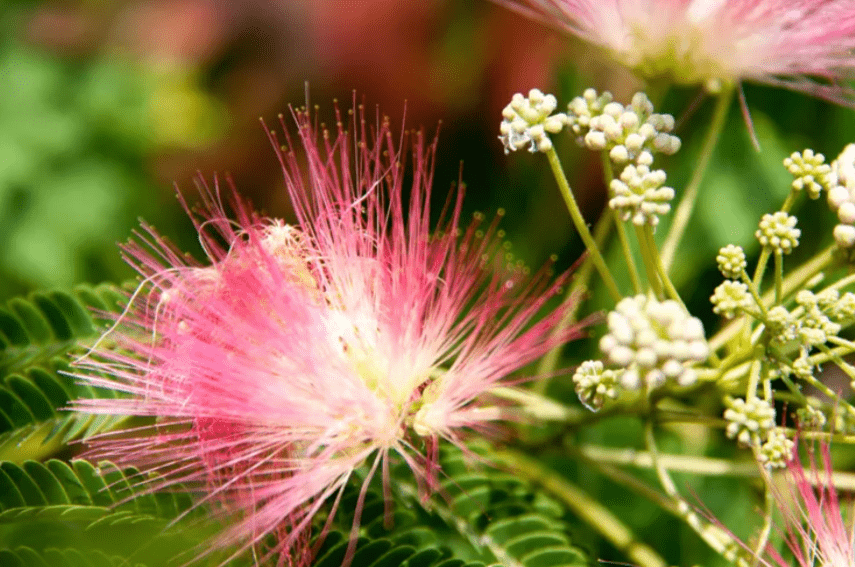
Origins and History: Brief history and origin of mimosa trees.
The mimosa tree is a beautiful and elegant addition to any garden or landscape. With its delicate pink flowers and graceful fern-like leaves, it adds a touch of beauty and charm to any outdoor space. The mimosa tree has a rich history and is believed to have originated in Asia, specifically in China and Japan. It was later introduced to the United States in the 18th century and has since become a popular ornamental tree.
It’s important to note that while these trees are stunning, they can also be invasive in some regions. It’s essential to research and understand the local regulations and potential impacts of planting mimosa trees in your area before adding them to your garden. In terms of care, mimosa trees require regular watering, especially during dry periods, and benefit from well-drained soil. They also thrive in full sun but can tolerate partial shade. Pruning is also important to maintain the tree’s shape and health, and it’s essential to keep an eye out for pests and diseases that could affect the tree’s growth.
Overall, with the right care and attention, mimosa trees can be a stunning addition to any garden or landscape, providing beauty, shade, and wildlife attraction. So, if you’re looking to add a touch of elegance to your outdoor space, consider growing and caring for your very own mimosa tree.
Significance: Importance and uses of mimosa trees in various cultures and landscapes.
Mimosa trees hold significant importance in various cultures and landscapes. They are known for their stunning beauty and delicate, fragrant flowers, making them a popular choice for gardens and landscaping. In addition to their aesthetic value, mimosa trees also provide shade and attract wildlife, adding to the overall biodiversity of an area. They have been used in traditional medicine and have cultural significance in some regions, adding to their value beyond just their appearance.
However, it’s important to be aware of the potential impact of planting mimosa trees in certain regions. While they are beautiful, they can also be invasive in some areas and may require extra care and attention to prevent them from spreading uncontrollably. It’s crucial to research and understand the local regulations and potential impacts of planting mimosa trees in your area before adding them to your garden.
In terms of care, mimosa trees require regular watering, especially during dry periods, and benefit from well-drained soil. They thrive in full sun but can tolerate partial shade, making them adaptable to different environments. Pruning is also important to maintain the tree’s shape and health, and it’s essential to keep an eye out for pests and diseases that could affect the tree’s growth.
Overall, with the right care and attention, mimosa trees can be a stunning addition to any garden or landscape, providing beauty, shade, and wildlife attraction. So, if you’re looking to add a touch of elegance to your outdoor space, consider growing and caring for your very own mimosa tree. Their significance in various cultures and their uses in landscapes make them a valuable addition to any garden.
Types of Mimosa Trees
Albizia julibrissin (Silk Tree): Detailed description and characteristics.
The Albizia julibrissin, also known as the Silk Tree, is a stunning and unique addition to any garden or landscape. With its delicate, fern-like leaves and vibrant, pink powder puff flowers, it adds a touch of elegance and beauty to any outdoor space. The tree is known for its ability to attract butterflies and birds, making it a valuable addition for those who want to create a habitat for wildlife in their garden.
In terms of care, mimosa trees require regular watering, especially during dry periods, and benefit from well-drained soil. They thrive in full sun but can tolerate partial shade, making them adaptable to different environments. Pruning is also important to maintain the tree’s shape and health, and it’s essential to keep an eye out for pests and diseases that could affect the tree’s growth.
Before adding mimosa trees to your garden, it’s crucial to research and understand the local regulations and potential impacts of planting them in your area. Some regions consider them invasive, so it’s important to be aware of the potential impact on the local ecosystem before adding them to your landscape.
Overall, with the right care and attention, mimosa trees can be a stunning addition to any garden or landscape, providing beauty, shade, and wildlife attraction. So, if you’re looking to add a touch of elegance to your outdoor space, consider growing and caring for your very own mimosa tree. Their significance in various cultures and their uses in landscapes make them a valuable addition to any garden.
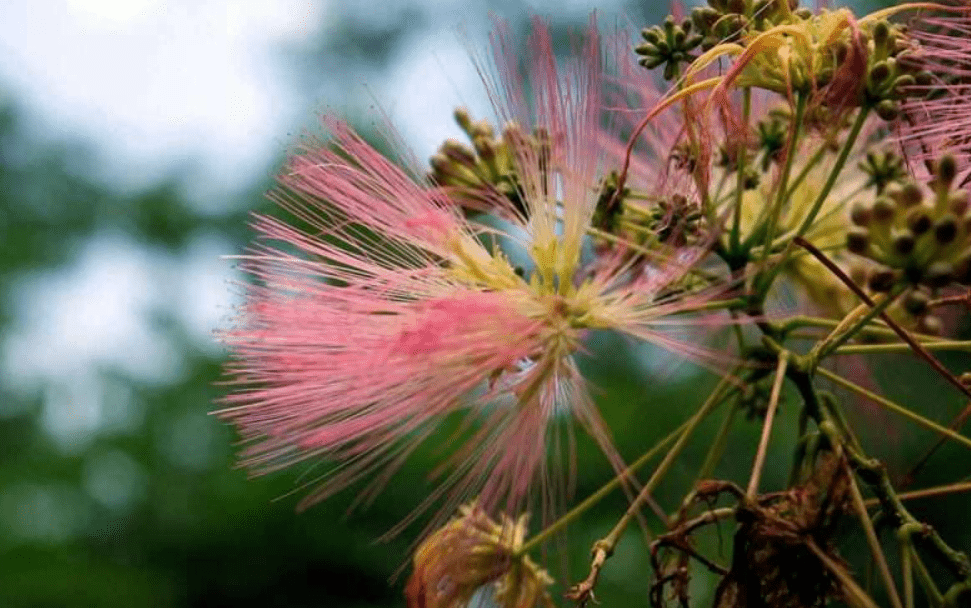
Other Varieties: Overview of other popular types of mimosa trees.
Mimosa trees are a beautiful addition to any garden, and there are many other popular varieties to consider. From the Persian silk tree to the Japanese silk tree, there are numerous options to choose from. Each variety has its own unique characteristics and can bring a different aesthetic to your garden. Whether you’re looking for a more compact tree or a larger, more sprawling variety, there’s sure to be a mimosa tree that fits your needs. Additionally, it’s important to consider the local regulations and potential impact on the environment before planting any variety of mimosa tree. Some regions may consider them invasive, so it’s crucial to do your research and make an informed decision before adding them to your landscape. With the right care and attention, mimosa trees can be a stunning addition to any garden, providing beauty, shade, and wildlife attraction. So, if you’re looking to add a touch of elegance to your outdoor space, consider exploring the different varieties of mimosa trees and finding the perfect one for your garden. You won’t regret it!
Comparison: Differences and similarities between the varieties.
When it comes to choosing the right variety of mimosa tree for your garden, it’s important to consider the differences and similarities between the options available. Each variety has its own unique characteristics and can bring a different aesthetic to your outdoor space. Some varieties may be more compact and ideal for smaller gardens, while others may be larger and more sprawling, providing a statement piece for larger landscapes. It’s important to consider the local regulations and potential impact on the environment before planting any variety of mimosa tree. Some regions may consider them invasive, so it’s crucial to do your research and make an informed decision before adding them to your landscape. With the right care and attention, mimosa trees can be a stunning addition to any garden, providing beauty, shade, and wildlife attraction. So, take the time to explore the different varieties of mimosa trees and find the perfect one for your garden. Trust me, it will be worth it!
Benefits of Mimosa Trees
Aesthetic Appeal: How mimosa trees enhance the beauty of landscapes and gardens.
Mimosa trees are an excellent addition to any landscape or garden, bringing a unique and captivating aesthetic appeal. Their delicate, fern-like foliage and vibrant, showy flowers create a stunning visual display that can enhance the beauty of any outdoor space. Whether you have a small garden or a sprawling landscape, there is a variety of mimosa tree that can suit your needs. From compact varieties perfect for smaller gardens to larger, more sprawling varieties that make a statement in larger landscapes, the options are endless. Adding a mimosa tree to your outdoor space can bring a touch of elegance and charm, creating a focal point that is sure to capture attention. Not only do mimosa trees provide aesthetic beauty, but they also offer shade and attract wildlife, making them a valuable addition to any garden. However, it’s important to consider the potential impact on the environment and local regulations before planting a mimosa tree, as some varieties may be considered invasive in certain regions. With proper care and attention, the beauty and benefits of a mimosa tree can be enjoyed for years to come. So, take the time to explore the different varieties and find the perfect mimosa tree for your garden. Trust me, the stunning aesthetic appeal they bring will be worth it!
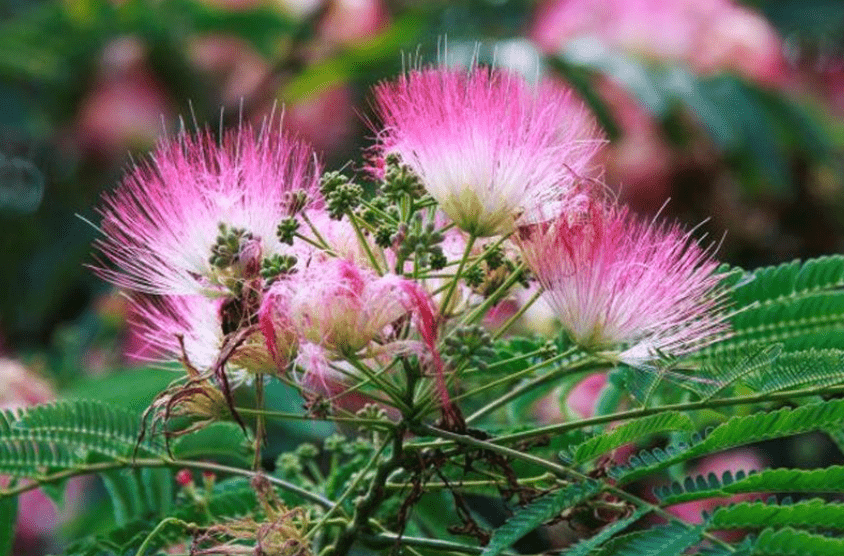
Ecological Benefits: Contribution to the environment, such as attracting pollinators.
When it comes to choosing the perfect tree for your outdoor space, the mimosa tree stands out as an excellent choice. Not only do mimosa trees provide aesthetic beauty, but they also offer shade and attract wildlife, making them a valuable addition to any garden. The ecological benefits of planting a mimosa tree are numerous, as they contribute to the environment by attracting pollinators and providing a habitat for wildlife. Additionally, their stunning, fragrant blooms can enhance the beauty of any landscape. It’s important to consider the potential impact on the environment and local regulations before planting a mimosa tree, as some varieties may be considered invasive in certain regions. With proper care and attention, the beauty and benefits of a mimosa tree can be enjoyed for years to come. So, take the time to explore the different varieties and find the perfect mimosa tree for your garden. Trust me, the stunning aesthetic appeal and ecological benefits they bring will be worth it!
Medicinal Uses: Traditional uses of mimosa trees in herbal medicine.
Mimosa trees have been used in traditional herbal medicine for centuries. The bark, leaves, and flowers of the mimosa tree have been used to create natural remedies for a variety of ailments. In some cultures, the mimosa tree is known for its anti-inflammatory properties and has been used to treat skin conditions and joint pain. The flowers of the mimosa tree have also been used to create teas that are believed to have calming and relaxing effects on the body. Additionally, the bark and leaves of the tree have been used to create tinctures and extracts that are thought to have immune-boosting and antiseptic properties. With its long history of medicinal use, the mimosa tree continues to be a valuable resource for those seeking natural remedies for their health and wellness. So, consider incorporating the mimosa tree into your garden not only for its aesthetic beauty and ecological benefits, but also for its potential medicinal uses. It’s a wonderful way to connect with nature and explore the healing powers of this remarkable tree.
How to Plant Mimosa Trees
Site Selection: Choosing the right location for planting.
When it comes to planting a mimosa tree, site selection is crucial. You’ll want to choose a location that provides plenty of sunlight and well-drained soil. Mimosa trees thrive in full sun, so be sure to select a spot in your garden that receives ample sunlight throughout the day. Additionally, make sure the soil is well-drained to prevent waterlogging, which can lead to root rot and other issues.
It’s also important to consider the size of the tree at maturity when selecting a planting site. Mimosa trees can grow quite large, so be sure to choose a location that can accommodate their size without crowding other plants or structures.
By choosing the right location for planting, you can ensure that your mimosa tree has the best possible chance of thriving and beautifying your garden for years to come. So take the time to carefully select the perfect spot for your mimosa tree, and get ready to enjoy its stunning beauty and potential medicinal benefits.
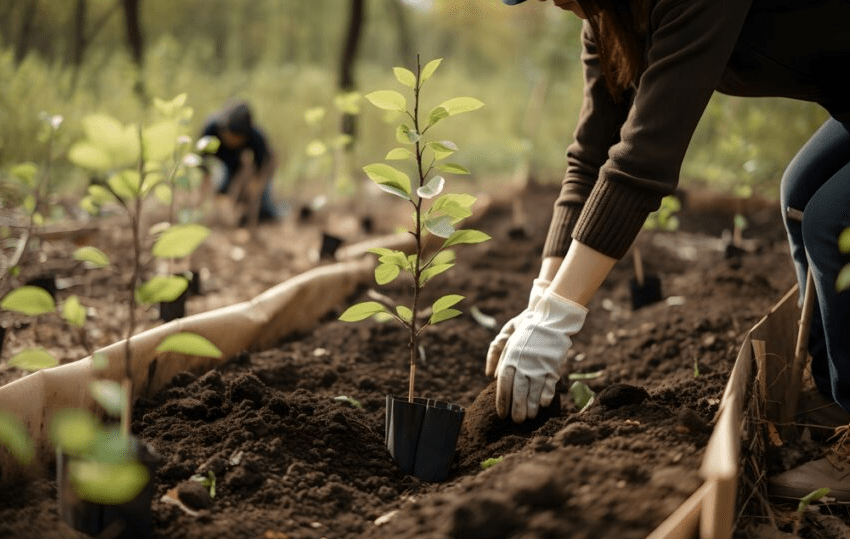
Soil Preparation: Preparing the soil for optimal growth.
When it comes to soil preparation, there are a few key factors to keep in mind to ensure optimal growth for your plants. First and foremost, it’s important to choose a location that provides plenty of sunlight and well-drained soil. Plants need sunlight to photosynthesize and thrive, so be sure to select a spot in your garden that receives ample sunlight throughout the day. Additionally, make sure the soil is well-drained to prevent waterlogging, which can lead to root rot and other issues. It’s also important to consider the size of the plant at maturity when selecting a planting site. You want to choose a location that can accommodate the plant’s size without crowding other plants or structures. By taking the time to carefully prepare the soil and select the right location for planting, you can set your plants up for success and ensure they have the best possible chance of thriving in your garden. So don’t overlook the importance of soil preparation – it’s a crucial step in creating a healthy and vibrant garden.
Planting Process: Step-by-step guide to planting mimosa trees.
To start the planting process, it is important to choose a location that provides plenty of sunlight and well-drained soil. Plants need sunlight to photosynthesize and thrive, so be sure to select a spot in your garden that receives ample sunlight throughout the day. Additionally, make sure the soil is well-drained to prevent waterlogging, which can lead to root rot and other issues.
Once you have chosen the right location, it is time to prepare the soil. Dig a hole that is twice the width of the root ball and just as deep. Gently remove the tree from its container and loosen the roots before placing it in the hole. Backfill the hole with soil, making sure to press down firmly to remove any air pockets. Water the tree thoroughly after planting to help it settle into its new home.
It’s also important to consider the size of the plant at maturity when selecting a planting site. You want to choose a location that can accommodate the plant’s size without crowding other plants or structures. By taking the time to carefully prepare the soil and select the right location for planting, you can set your plants up for success and ensure they have the best possible chance of thriving in your garden.
So don’t overlook the importance of soil preparation – it’s a crucial step in creating a healthy and vibrant garden. With the right preparation and care, your mimosa trees will flourish and bring beauty to your outdoor space.
Best Time to Plant: Ideal seasons for planting mimosa trees.
The best time to plant mimosa trees is in the spring or fall, when the weather is mild and the tree has the best chance of establishing itself. It’s important to prepare the planting site properly to give your tree the best chance of success. Make sure to choose a location with well-drained soil and plenty of sunlight. Backfill the hole with soil, making sure to press down firmly to remove any air pockets. Water the tree thoroughly after planting to help it settle into its new home. It’s also important to consider the size of the plant at maturity when selecting a planting site. You want to choose a location that can accommodate the plant’s size without crowding other plants or structures. By taking the time to carefully prepare the soil and select the right location for planting, you can set your plants up for success and ensure they have the best possible chance of thriving in your garden. So don’t overlook the importance of soil preparation – it’s a crucial step in creating a healthy and vibrant garden. With the right preparation and care, your mimosa trees will flourish and bring beauty to your outdoor space. So, whether it’s spring or fall, make sure to plant your mimosa trees with care and attention to detail for the best results.
Caring for Mimosa Trees
Watering Requirements: How often and how much to water mimosa trees.
When it comes to watering mimosa trees, it’s important to water them thoroughly after planting to help them settle into their new environment. Once established, mimosa trees have moderate water needs and should be watered deeply but infrequently. It’s important to consider the size of the tree at maturity when selecting a planting site, as you want to choose a location that can accommodate the tree’s size without crowding other plants or structures. Proper soil preparation is also crucial for the success of mimosa trees, so be sure to take the time to carefully prepare the soil before planting. Once the trees are established, watering requirements will vary depending on the climate and soil conditions. In general, mimosa trees prefer well-draining soil and benefit from deep, infrequent watering to promote healthy root growth. By providing the proper care and attention to detail, your mimosa trees will thrive and bring beauty to your outdoor space. So don’t overlook the importance of proper watering and soil preparation – it’s essential for the health and vitality of your mimosa trees.
Fertilization: Best fertilizers and feeding schedule.
When it comes to fertilizing mimosa trees, it’s essential to choose a high-quality, balanced fertilizer to promote healthy growth and vibrant blooms. Look for a fertilizer specifically designed for flowering trees and follow the recommended feeding schedule to ensure your mimosa tree gets the nutrients it needs. It’s important to fertilize your mimosa tree in the early spring, just as the new growth begins to emerge. This will help support healthy growth and beautiful blooms throughout the growing season. Additionally, be sure to follow the instructions on the fertilizer package and avoid over-fertilizing, as this can lead to excessive foliage growth at the expense of flowers. With the right fertilization and feeding schedule, your mimosa tree will thrive and bring beauty to your outdoor space for years to come. Don’t overlook the importance of proper fertilization – it’s a crucial step in caring for your mimosa tree and ensuring its long-term health and vitality.
Pruning Tips: How and when to prune mimosa trees for healthy growth.
Pruning your mimosa tree is essential for promoting healthy growth and beautiful blooms. The best time to prune your mimosa tree is in the late winter or early spring, before new growth begins to emerge. This will help to shape the tree and encourage the growth of new, healthy branches. When pruning, be sure to remove any dead or diseased branches, as well as any crossing or rubbing branches that could cause damage. It’s important to use sharp, clean pruning shears to make clean cuts and prevent the spread of disease. Additionally, be sure to prune your mimosa tree lightly, as it is sensitive to heavy pruning and can be prone to stress. By following these pruning tips, you can ensure that your mimosa tree will continue to thrive and bring beauty to your outdoor space for years to come. Don’t overlook the importance of proper pruning – it’s a key step in caring for your mimosa tree and promoting healthy growth. With the right pruning techniques, your mimosa tree will continue to flourish and enhance the beauty of your landscape.
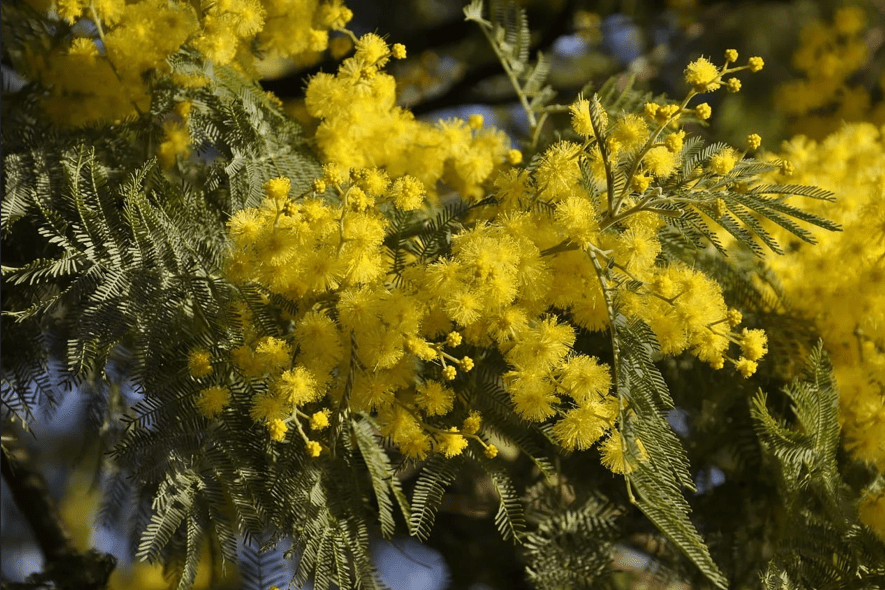
Common Issues and Solutions
Yellowing Leaves: Causes and remedies.
Yellowing leaves on your plants can be a frustrating sight, but there are some simple remedies to help bring your plants back to full health. The most common causes of yellowing leaves are overwatering, nutrient deficiencies, or pests. To remedy this, make sure to water your plants properly and adjust the frequency to avoid overwatering. Additionally, consider using a balanced, slow-release fertilizer to provide your plants with the necessary nutrients they need. Lastly, keep an eye out for any pests that may be causing damage to your plants and take appropriate measures to control them. By addressing these issues and taking proper care of your plants, you can help them to thrive and remain healthy for years to come. Don’t let yellowing leaves bring you down – with the right remedies, your plants can be back to their vibrant, healthy selves in no time.
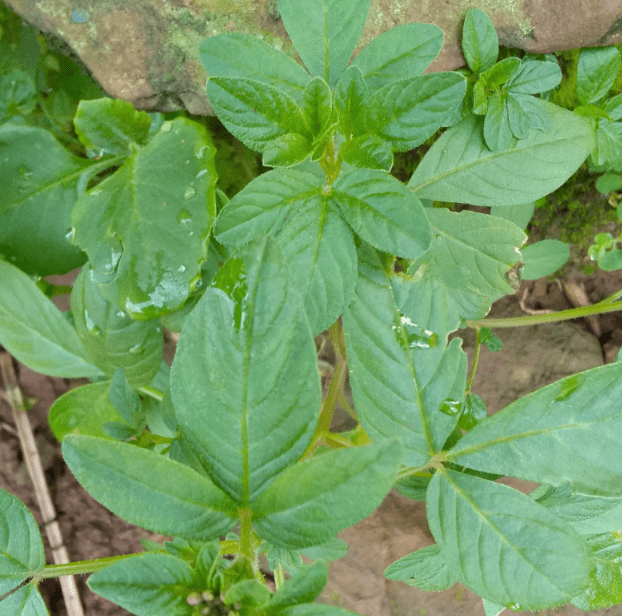
Leaf Spot Diseases: Identification and treatment.
It can be disheartening to see your plants suffering from leaf spot diseases, but it is important to identify and treat them before they spread further. Leaf spot diseases are caused by fungal or bacterial infections and can lead to yellowing, browning, or spotting on the leaves of your plants. To identify leaf spot diseases, look for small, dark spots or lesions on the leaves, as well as yellowing or browning of the affected areas.
To treat leaf spot diseases, start by removing and disposing of any infected leaves or plants to prevent the spread of the disease. It is also important to ensure that your plants are receiving proper air circulation and sunlight, as well as being watered at the base to prevent moisture from accumulating on the leaves. In severe cases, fungicides or bactericides may be necessary to control the spread of the disease.
Don’t let leaf spot diseases take over your plants – with proper identification and treatment, you can help your plants to recover and thrive once again. Keep a close eye on your plants and take swift action to address any signs of leaf spot diseases to ensure the health and vitality of your garden. Leaf Spot Diseases: Identification and treatment.
In conclusion, growing and caring for mimosa trees is a rewarding and fulfilling experience. By following the tips and advice in this guide, you can ensure that your mimosa trees thrive and flourish in your garden. From proper planting techniques to regular maintenance and care, you have everything you need to create a beautiful and vibrant outdoor space. Don’t miss out on the opportunity to add these stunning trees to your garden and enjoy their beauty for years to come. Happy gardening!
Frequently asked questions And Answer
The best way to plant a mimosa tree is to choose a location with well-drained soil and full sunlight. Dig a hole twice as wide and as deep as the root ball, and gently loosen the roots before planting. Water the tree thoroughly after planting.
Mimosa trees prefer slightly moist soil, so it’s important to water them regularly, especially during dry periods. However, be careful not to overwater, as they can be susceptible to root rot.
A balanced, slow-release fertilizer is best for mimosa trees. Apply the fertilizer in the spring before new growth appears, and again in the summer if necessary.
Pruning a mimosa tree should be done in late winter or early spring before new growth begins. Remove any dead or damaged branches, as well as any suckers or water sprouts. It’s also important to thin out the canopy to improve air circulation.
Mimosa trees are susceptible to pests such as webworms, scale, and mimosa webworms. They can also be affected by diseases such as powdery mildew and verticillium wilt. Regular inspection and proper care can help prevent and manage these issues.
Mimosa trees are fast-growing and can reach a height of 20 to 35 feet with a spread of 20 to 35 feet. They can grow up to 3 feet per year under ideal conditions.
Mimosa trees are hardy in USDA zones 6 to 10 and can tolerate some cold temperatures. However, they may need protection during harsh winters, especially in cooler zones.
Mimosa trees are prized for their beautiful, fragrant flowers and graceful, fern-like foliage. They also provide shade and attract pollinators such as butterflies and hummingbirds. Additionally, they can add a tropical, exotic feel to any landscape.
